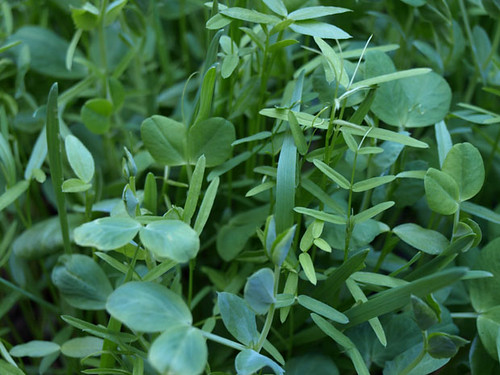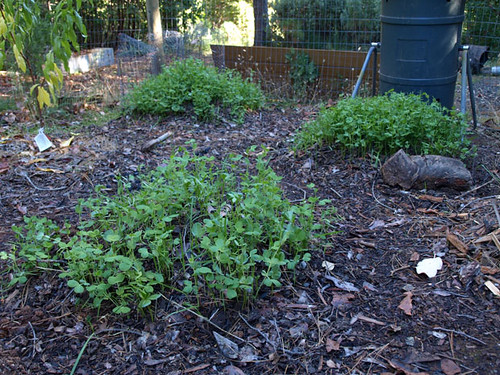 Cover cropping is, in my view, one of the best things you can do for your soil, and one of the easiest.
Cover cropping is, in my view, one of the best things you can do for your soil, and one of the easiest.
Here’s how it works:
You plant some seeds – I usually use a mix of legumes (vetch, bell beans and field peas) and cold weather annual grasses (rye and oats) – timing your planting for the first fall rains, which in my neck of the woods usually fall in late October. The seeds germinate and grow fairly vigorously until the weather gets very cold, at which point the plants go dormant.
 At the first sign of warm(ish) weather in the spring, everything wakes up and puts on mad growth. All the while the legumes fix nitrogen in their roots via an amazing relationship with bacteria, and that nitrogen helps the next crop along, while the grasses and greens add organic matter. 2 or 3 weeks before you’re ready to plant spring/summer annuals, you chop up the plants and either till them into the soil, or compost them, or else just leave them on top of the soil as mulch. What could be better?
At the first sign of warm(ish) weather in the spring, everything wakes up and puts on mad growth. All the while the legumes fix nitrogen in their roots via an amazing relationship with bacteria, and that nitrogen helps the next crop along, while the grasses and greens add organic matter. 2 or 3 weeks before you’re ready to plant spring/summer annuals, you chop up the plants and either till them into the soil, or compost them, or else just leave them on top of the soil as mulch. What could be better?
A couple of weeks ago, I wrote about creating various hügelkultur mounds for future fruit trees. I planted the mounds out with a cover crop, which I imagine might mitigate some of the potential nitrogen deficiency that comes with burying lots of woody materials, and besides, soil always seems happier when it’s hosting plants.


Pingback: Misery? | food|forest|garden